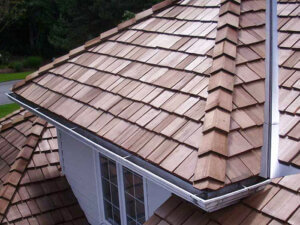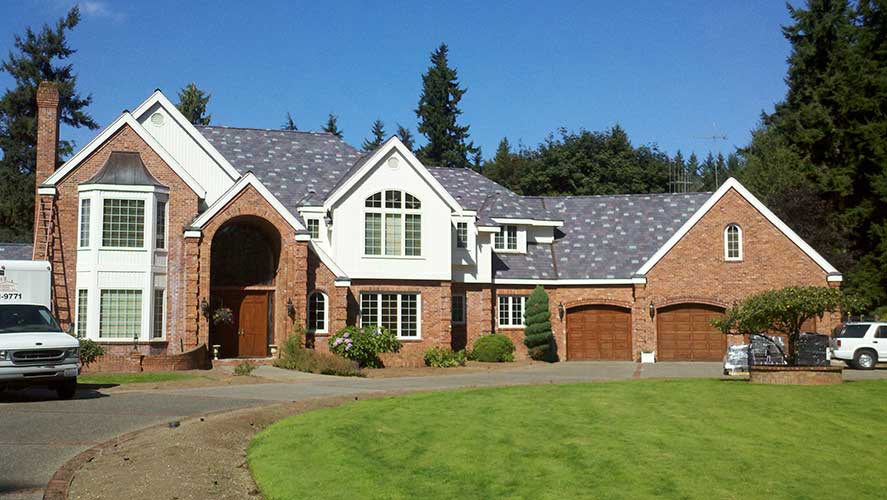If you live in your house long enough, it’s only a matter of time before you’ll have to schedule a roof repair or replacement project. When that day comes, our experts at Larry Haight’s Residential Roofing Company want to ensure you feel prepared. That’s why we’ve put together this convenient guide to the most important roofing terms.
Whether you peruse this guide leading up to your project or use it as a quick cheat sheet when you need a reminder about a specific term, we hope you find it helpful!
A-Z Roofing Terms You Need to Know
A
Asphalt shingles: One of the most common roofing materials, composed of a base (organic or fiberglass) saturated with asphalt and coated with mineral granules for protection and aesthetics.
Attic ventilation: The system of intake and exhaust vents that regulate air flow in the attic, reducing heat buildup and moisture accumulation.
B
Bitumen roofing: A type of flat roofing material made from asphalt-based products, available in roll form and commonly used in low-slope applications.
Battens: Thin strips of material (wood, metal, or plastic) installed horizontally on a roof to provide a base for tile or metal roofing panels.
C
Cedar shake roofing: Roofing that is made from split cedar logs, providing a natural, rustic appearance and excellent insulation properties.

Composition roofing: A type of roofing material made from a blend of asphalt, fiberglass, and mineral granules, known for its durability and affordability.
D
Drip edge: A metal flashing that is installed along the edge of the roof to direct water away from the fascia and into the gutters.
Decking: The structural base of the roof, usually made of plywood or OSB, onto which all roofing materials are installed.
E
Eave: The lower edge of the roof that overhangs the wall of a building.
EPDM: A type of synthetic rubber roofing membrane (ethylene propylene diene monomer), known for its durability and use in flat or low-slope roofs.
F
Fascia: Horizontal board that is installed along the edge of the roof to which the gutters are typically attached.
Flashing: Thin strips of metal or other waterproof material that are installed at joints and seams to prevent water penetration.
Fire rating: Classification of roofing materials based on their resistance to fire. Ratings include Class A (most resistant), B, and C.
G
Gable: The triangular portion of a wall between the edges of intersecting roof slopes.
Granules: Small, colored particles embedded in asphalt shingles to enhance durability and aesthetic appeal.
Gutter: A trough fixed beneath the edge of a roof for carrying off rainwater.
H
Hip: The external angle formed by the intersection of two roof slopes, sloping downwards from the ridge towards the eaves.
Heat welding: A method of fusing roofing membranes together using hot air, common in single-ply roofing systems like TPO or PVC.
I
Ice and water shield: A self-adhering membrane that is installed around roof penetrations along the eaves and in valleys to prevent water leaking in from ice dams and wind-driven rain.
Insulation board: Rigid panels used beneath roofing materials to enhance thermal performance and energy efficiency.
J
Joist: Horizontal framing members that support the roof deck and provide a nailing surface for roofing materials.
Jack flashing: A pre-formed flashing piece used to seal around vent pipes or other roof penetrations.
K
Kick-out flashing: A small, angled piece of flashing at the bottom of a roof slope to direct water away from siding and into a gutter.
K-style gutters: A common type of gutter with a decorative profile that resembles crown molding, often used in residential construction.
L
Low-slope roof: A roof with a pitch lower than 3:12, which requires special waterproofing membranes rather than shingles.

Laminated shingles: Also known as architectural shingles, these are made with multiple layers for improved durability and a more dimensional look.
M
Metal standing seam panel roofing: A roofing system consisting of metal panels with raised seams that interlock vertically, providing a sleek and modern appearance.
Modified bitumen: A rolled roofing product that consists of asphalt and reinforcing fabrics, used for flat or low-slope roofs.
N
Nail pop: A condition where roofing nails protrude above the surface of shingles, often due to temperature changes or improper installation.
Non-vented soffit: A solid soffit used where attic ventilation is not required or already achieved through other means.
O
OSB (Oriented Strand Board): Engineered wood panel used for roof decking, made by compressing layers of wood strands with adhesives.
Overhang: The section of the roof that extends beyond the exterior wall, providing weather protection and aesthetic appeal.
P
Pitch: The steepness or slope of the roof, typically expressed as a ratio of rise over run.
PVC membrane roofing: A type of roofing material made from polyvinyl chloride (PVC) that provides excellent durability and resistance to UV rays and chemicals.
Q
Quickset adhesive: A fast-curing bonding agent used in roofing to adhere membranes or flashing in areas requiring immediate sealing.
Quarter-round flashing: Curved flashing used at the base of curved roof details or transitions, often decorative in nature.
R
Rafters: Sloping framing members that support the roof and transfer their weight to the walls of the structure.
Rake: The inclined edge of a roof that runs from the eave to the ridge.
Ridge: The highest point where two roof slopes meet, typically running horizontally along the length of the roof.
Ridge cap: The finishing strip that is installed along the ridge of the roof to protect the seam between the two slopes.
Roof deck: The structural substrate or base layer of the roof, typically made of plywood or oriented strand board (OSB).
Roofing cement: A waterproof sealant used to bond roofing materials and repair leaks.
Roofing felt: A type of underlayment made from asphalt-saturated felt used to provide an additional layer of protection against moisture.
S
Seam tape: A flexible, waterproof tape used to seal joints and seams in roofing materials.
Scuppers: Openings in the roof or parapet wall designed to allow water to drain from the roof surface.
Soffit: The underside of the eaves, often ventilated to allow air circulation in the attic.
Starter strip: The first row of shingles that are installed along the eaves to provide a secure base for the rest of the roofing material.
Synthetic roofing: Roofing materials that are made from synthetic polymers such as plastic or rubber, offering durability, flexibility, and a wide range of design options.
Synthetic underlayment: Made from a unique polypropylene and polymer composite material, making it highly resistant to tears, punctures, and impacts. This advanced material ensures that the underlayment remains intact and functional, even under the harshest weather conditions.
T
Truss: Prefabricated structural framework composed of triangular shapes, providing support for the roof.
U
Underlayment: A water-resistant or waterproof barrier installed directly onto the roof deck beneath the roofing material to provide secondary protection.
UV degradation: Deterioration of roofing materials caused by prolonged exposure to ultraviolet rays, leading to brittleness and cracking.
V
Valley: The internal angle formed by the intersection of two roof slopes, directing water towards the eaves.
Ventilation: The process of allowing air to circulate through the attic space, preventing moisture buildup and heat accumulation.
W
Weather barrier: A protective layer that resists water and air infiltration, often applied under siding or roofing.
Woven valley: A method of installing shingles in the roof valley by overlapping them to create a weaved appearance, offering added protection.
X
XPS insulation: Extruded polystyrene insulation used in roofing for its moisture resistance and high R-value (thermal resistance).
Y
Yield strength: The maximum stress that a roofing material can withstand without permanent deformation, important in metal roofing.
Z
Z-flashing: A Z-shaped piece of flashing used to direct water away from joints, especially in step flashings or horizontal transitions.
Your Local Roofing Expert
Now that you know the most important roofing terms, you’re ready to take the next step toward planning your repair or replacement project. To schedule a consultation and request a free estimate, please call 425-881-9771 or contact us online today.

